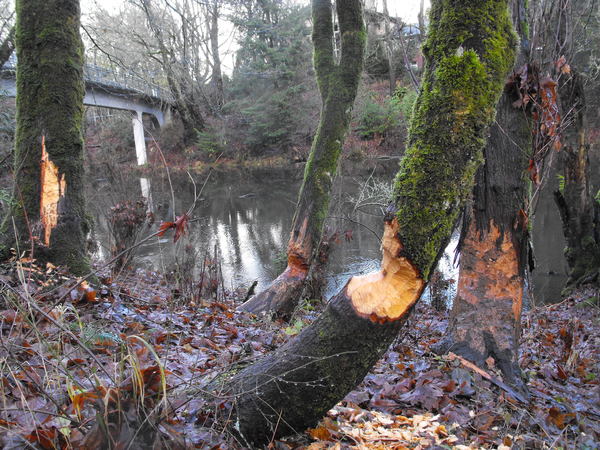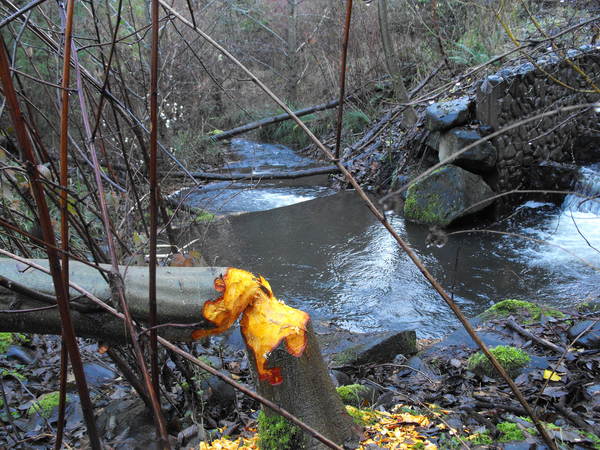Beaver’s are as busy as ever out here in the canyon. As the temperature drops – and the nights are long we find ourselves in the prime of beaver season. Historicly at this time of the year there is a lot more obvious chewing at the base of the surrounding canopy. It is suspected that at this time of year we are dealing with hungry pregnant beavers. Filling up on cambium before their babies are born. Young beaver have been observed in Reed Canyon as early as March swimming near the edge of the canyon looking for young saplings and aquatic plants to munch on.
Unlike most other rodents, beaver pairs are monogamous, and stay with their partner for multiple breading seasons.
American Beaver (Castor Canadensis) is considered the largest rodent in North America and the third largest rodent in the world behind the capybara, and the Eurasian beaver. In Reed Canyon it’s not uncommon to see mature beaver weighing over 50lbs. and at a length or 3 feet.
These semi-aquatic critters are mostly active at night. If you wanted to come to campus and see one of these guys for yourself I would recommend positioning yourself near the amphitheater on the south-side of the trail system right before dusk- I usually hear a big splash around that time-
which is the beaver leaving its den and slapping the water with its tail (the den is right below your feet right now- and as you walk eastward towards the bridge- you’ll probably walk over 4 more.) If you follow them form here- you can observe their feeding habits as they make their way eastward towards the springs and the shallows of the canyon to feed and gather woody materials for dam-building.
Another good vantage point to observe beavers in the early evening is from the perspective on top the blue-bridge. From here you can see them swimming on the lake’s bottom to the east as mentioned before.
In the canyon you won’t see beaver lodges – since our system is spring fed the lake doesn’t freeze solid and mobility and access even in the coldest of years is never much of an issue. What is more typical in our system is the observation of dens- along the edge of the lake, generally under the shoreline trees. The Reed-beaver use the roots of the trees as the roof of their den-which works fine for the most part until the beavers undermine the trees to a point in which they fall into the water. So next time you take a look at the middle and lower lake areas- look at where the trees have fallen from- if you get close you can still see the signs and size of these areas the beavers call home.
Managing a restoration of an urban greenspace that has beaver one must learn to love and appreciate the beaver and all it does. Fortunately the beavers seem less interested in the newly introduced cuttings I’ve been putting around the lake’s edge- but just as I get comfortable with that- in one evening the beavers can wipe out a grouping of 10-year-old tress. So I have been forced to wrap cages around the trees that are most sensitive to beaver predation. But I also understanding that most riparian shrubs actually benefit form the grazing practices of the beaver- specifically willows, dogwoods, and spireas. The grazing forces these plants to send out multiple tops from several growing points which actually helps shade a larger area of stream-bank, and the repeated grazing helps stabilize the stream banks by forcing the root structures to spread-
This natural thinning also allows for more light penetration to the canyon floor giving secondary plants opportunities to move up in sequence and become dominate.
The woody materials that the beaver collect seem to mostly be used to construct a system of dams at the eastern part of the canyon- these dams can affect the hydrology of the system-but that’s not necessarily bad. These pools actually allow for fish, waterfowl, and amphibians to access and reside in areas that were less suitable prior to the creation of the backflow. The creation of standing water in some of the upper wetlands has actually helped me control some of the invasive grasses- that were aggressively infilling the springs area- by having the standing water over the grasses, the geese and ducks have moved in- grazing the grasses to their roots and limiting their ability to reproduce by seed or rhizome.
So as you may feel the affects of these short days and wonder what to do with yourself in-between rain storms come take a walk though the canyon- right now is a great opportunity for all ages to touch and see the nightly chewing of our state animal. Reed lake is considered the oldest naturally occurring lake within the City of Portland- without beavers these spring waters would have never had the opportunity to provide habitat for such a wide-range of indigenous species. Salmon, heron, amphibians- oh my!



